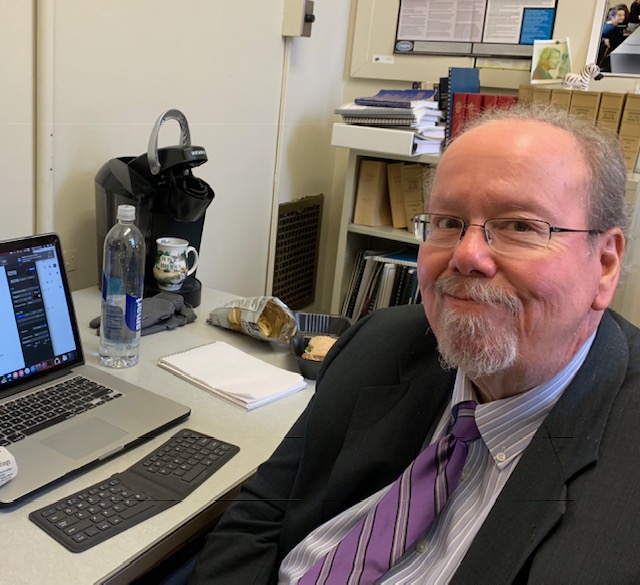
By GARRY RAYNO, Distant Dome
The adage often heard in the halls of the State House when medical services are at issue is “all patients should be able to access the care they need, when and where they need it.” However, if you have tried to make an appointment with a specialty physician such as a sleep specialist, or a cardiologist for a medical procedure, you will have to wait months and may only see a physician’s assistant.
And if you are healed enough to no longer require hospital care, you can wait for weeks in a hospital for an opening at a rehabilitation facility or nursing home.
And most everyone knows, despite the repeated attempts to reduce the number of patients with serious mental health issues in hospital emergency rooms before they are placed in a residential facility, adults and children still are warehoused in hospitals in violation of a court ruling forbidding the practice.
It is not only hospitals who are under the gun, it is also the community mental health centers, the federally qualified community health centers and substance abuse treatment and support centers.
No one wants to call it a life or death crisis, but it is indicative of a health care system that is teetering on failure’s edge and not meeting the goal of “access to the care they need, when and where they need it.”
Almost all of the organizations today who find themselves unable to meet the growing demand for health care services are non-profits who must treat any patient who comes to their facility whether he or she has health insurance or not, or if they can’t afford to pay for the services or are destitute.
And the push to create boutique medical care hurts the system as it tries to balance the finances with a state paying near the bottom of the country for medical reimbursement under the federal/state Medicaid program for the poor and disabled, with downshifting costs to those with health insurance and driving up premiums.
And when specialty boutiques do procedures that provide the “profits” to medical providers, the financial picture darkens for everyone they serve.
Many blame the COVID pandemic for the current state of the medical system, driving lower paid support staff like nurses and technicians out of the industry after they were asked to risk their lives in the early stages, and physicians laid off who went elsewhere to find work.
What the pandemic did was tell us how fragile the system was and is unless more is done to stabilize a system controlled more by insurance companies than medical professionals.
What the pandemic and its aftermath did do is create a perfect storm that has many of the smaller health organizations looking into the financial abyss after years of finding ways to squeeze all the money possible out of the system through health maintenance organizations, consolidations and legislative overreach.
Particularly hit hard has been the community health care system, both mental and physical, where many of the state’s poor turn for their medical care if they receive any at all.
In an Op-Ed, Kris McCracken, President and Chief Executive Officer of Amoskeag Health, a non-profit federally qualified health center serving Manchester, writes “I am writing today to urgently address the collective financial crisis New Hampshire’s community health centers are facing. Driven by a perfect storm of financial pressures, including an erosion of support from some funding sources and reimbursement rates not keeping pace with the rising costs of providing care in a ‘post-emergency’ world, New Hampshire’s FQHCs are in significant need of a strategic investment of emergency stabilization funding to preserve access to care for the 1 in 14 Granite Staters we serve.”
She explains what has brought the community health centers to the financial abyss:
Workforce shortages
The community health centers cannot offer competitive salaries to nurses, medical assistants, providers, and other health care staff that larger providers offer, meaning staff members have to choose between not making ends meet and leaving nonprofit work so they can care for themselves and their family. Some estimate the shortages of nurses in New Hampshire approaches 20 percent of what is needed.
Medicaid unwinding
Thousands of the state’s residents were covered under the Medicaid expansion program during the pandemic without having to requalify annually. New Hampshire was one of the more aggressive states removing people from the expanded program once the federal health emergency ended.
McCracken notes approximately 3,000 community center patients lost coverage so instead of being reimbursed at the state’s new Medicaid rates, most were shifted to self-pay and sliding fee discount plans, driving up the centers’ uncompensated care costs.
Erosion of 340B savings
The 340B program has been a consistent revenue stream for the community centers since 1992. Under the program, pharmaceutical companies offer discount drugs to low-income and vulnerable patients for chronic illnesses such as HIV, diabetes, heart disease, and thyroid conditions.
Currently some pharmaceutical companies are refusing to honor the discounts leading to a dramatic reduction in the centers’ savings, she explains, and that puts many patients in danger of losing access to the drugs they need.
Response to the pandemic
Pandemic-related cost increases for labor, drugs, and supplies created an unsustainable financial situation, particularly with federal supplemental pandemic funding ending this year and next.
While McCracken did not mention it, New Hampshire has an increasingly aging population that needs more health care services not less as people age and that has also contributed to the problem for health providers.
To back track, more than 30 years ago, the state faced a staggering revenue deficit and instituted the Medicaid Enhancement Tax, which taxes hospitals’ net patient service health at 5.4 percent to match federal Medicaid dollars, and then is returned to the hospitals as disproportional payment based on the number of Medicaid patient served.
This year the MET raised $320 million.
Not every hospital receives as much as they send to the state, but it is close and all this was reestablished after two court rulings saying the tax was unconstitutional, and the state settled with the hospital association agreeing that all the money generated for the state be used for Medicaid services.
That agreement ends at the end of the year, and Gov. Chris Sununu proposed a change that would return 91 percent of the money to hospitals while using the other 9 percent for community mental and physical health centers and substance abuse programs.
A change in the federal program would allow the state to receive a 60 percent match instead of the 50 percent it currently receives.
That allowed the state to retain about $60 million to distribute to the other medical and treatment facilities and for anything else.
The hospitals were furious, noting about 20 hospitals would lose around $15 million under the proposal.
The Senate changed the arrangement and then offered another plan during the committee of commerce at the end of the session more generous for the hospitals, but House Republicans stood with the governor and the whole thing died.
Sununu then ordered Health and Human Services Commissioner Lori Weaver to generate a plan that would return only 80 percent of what hospitals paid in taxes and seek federal approval.
Sununu called the plan fair and said it seeks to stabilize more of the system, but Steve Ahnen, CEO and president of the NH Hospital Association, said it would put patients’ care and the entire Medicaid program at risk.
McCracken had another suggestion: using what the state has not spent of the federal COVID relief and recovery money to shore up the community centers for years to come.
Several months ago about $60 of the federal money was allocated but not expected to be spent, although that figure has been reduced since the last report.
With the fragility of the entire health care system today, maybe it’s time for politics to be set aside and all stakeholders come to an understanding that will provide stability so a person won’t have to wait six months for a heart operation that was done in a month or two five years ago.
Garry Rayno may be reached at garry.rayno@yahoo.com.
Distant Dome by veteran journalist Garry Rayno explores a broader perspective on the State House and state happenings for InDepthNH.org. Over his three-decade career, Rayno covered the NH State House for the New Hampshire Union Leader and Foster’s Daily Democrat. During his career, his coverage spanned the news spectrum, from local planning, school and select boards, to national issues such as electric industry deregulation and Presidential primaries. Rayno lives with his wife Carolyn in New London.





